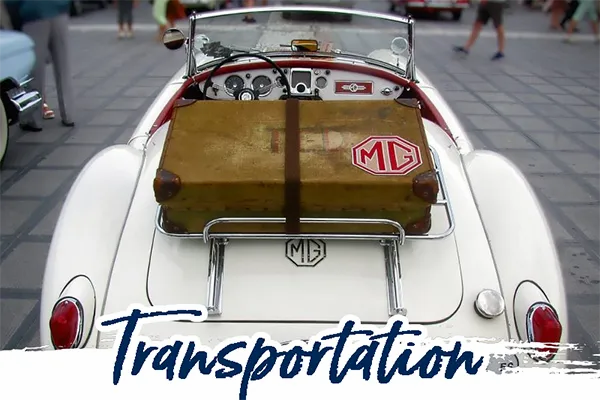.jpg?fit=outside&w=1600&h=1142)
Brief History of Dubrovnik Croatia
Dubrovnik hasn't always been known by this name, but for much of its history, it was named Ragusa, and the city was developed by Roman Refugees. It was known for its favorable tides, southern wind, ties to Venice, and salt trade.
I will be visiting Dubrovnik in September of 2022 and wanted to know more about it to make my understanding of the city and what historical events shaped the city and its people. The question I have is how a city like this survives with so many powers battling for power in the Balkans, read below to know more.
Also, make sure to check out my upcoming articles on things to do in Dubrovnik, how to spend an epic three days in Dubrovnik, and a day trip to Split from Dubrovnik.
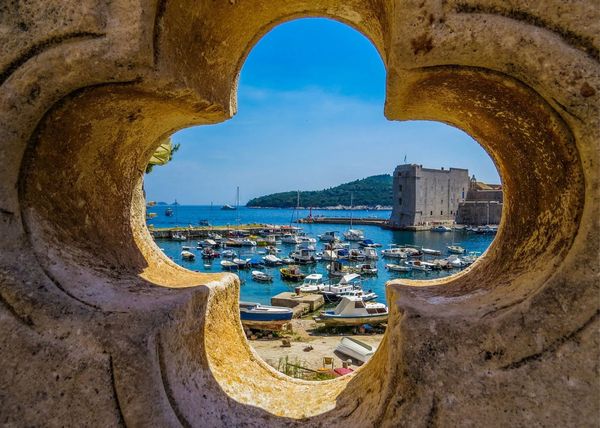.jpg?fit=outside&w=1600&h=1142)
In the Beginning, Dubrovnik Was Ragusa
Established in the 7th century by refugees from Epidaurus (a Roman city 15km south) who called it Ragusa. The refugees fled their city when it was being destroyed by the Slavs who were fighting with the Avars at the time. The refugees were initially protected by the Byzantine Empire, but then later under Venetian rule. The Salt and ship-building trade here helped the city grow and become quite wealthy very quickly.
By the 9th century, the town was paying tribute to the two Byzantine princes who controlled the land but allowed the Ragusians to cultivate the land. They took their knowledge of the Roman world and were able to fortify their city to be able to withstand a fifteen-month siege by the Arabs from southern Italy....twice.
The 11th century saw the rule of the Byzantines diminish to only theoretical claims. The Byzantine-Norman war broke out, and the Venetians started to meddle in the war and were granted trade concessions which allowed the Venetians ENORMOUS economic expansion. This pissed off the Ragusians who began to establish more and more independence. The Ragusians gained significant growth once the Pope elevated the Ragusan bishopric to archbishopric causing clashes that lasted two centuries with other cities along the Croatian coastline. As Dubrovnik entered into the 12th century, the Byzantine Empire was no longer available to help defend Dubrovnik against the Venetians and Dubrovnik finally succumbed to their rule.
By the 13th century, the city was bartered in a treaty and became a vassal state of Hungary. It was a self-run free city in essence, but they also paid a tax to the Ottoman Sultan to not attack them. They generally lived in peace here from the 13th-18th century.
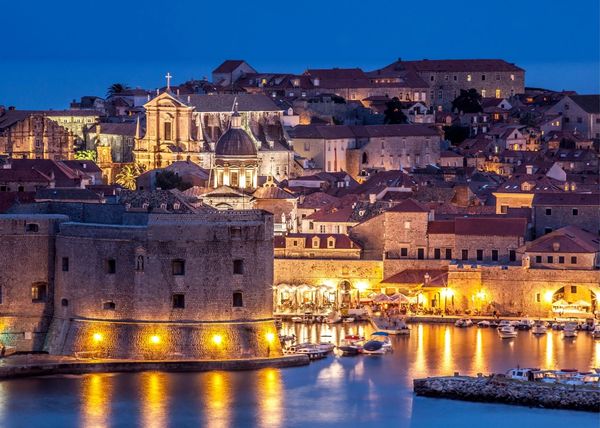.jpg?fit=outside&w=1600&h=1142)
Medieval Times in Dubrovnik
For much of the Medieval times (14th-17th century) Dubrovnik was a free state that came along with free thinking and innovation. The shipbuilding was so innovative that while the ships were being built, they were hidden from the public and spying from the enemies under the large archways you see near the ports. Doors were sealed and the secrets carefully guarded. The Adriatic coast was known for its favorable tides and southern wind that propelled them to the North towards Venice.
The oldest pharmacy in Europe was established with the Monastery in 1317 just in time for the plague to start sweeping Europe. The first Physician was mentioned in 1280, Magister Josephus. The plague struck Dubrovnik in 1348 with city records estimating 2,000-10,000 lives lost in a matter of four years, out of a population believed to have numbered between 6,000 and 30,000. Leprosy was an issue up until the 16th century had their own town outside the city walls. Malaria was also an issue, and Dubrovnik was one of the worst areas for Malaria along the Adriatic coast. When the French sailors arrived they brought sexually transmitted diseases or 'maladies of the genitalia'.
There were four types of doctors in Dubrovnik depending on their practice, and a female medical doctor was mentioned in 1325 likely a midwife. A law stipulated that a physician was to not be paid until the patient was healed or the desired effect achieved. The first garbage men were mentioned in 1415, along with proper drainage of the city, paving of the streets, and shop owners were required to sweep and keep their storefronts clean. In 1436 the aqueducts and sewage systems were installed in the city.
They were also battling Serbia in the last half of the 13th century and the beginning of the 14th century.
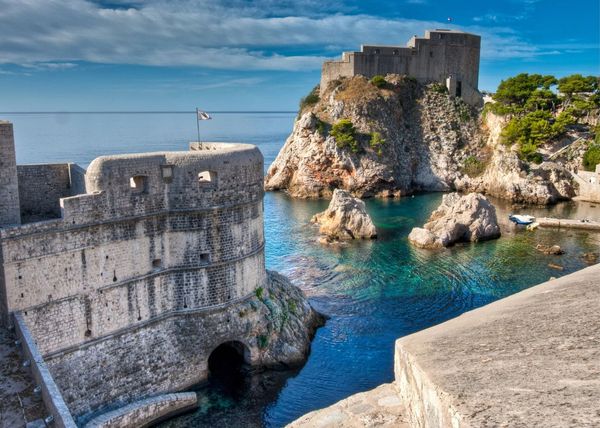.jpg?fit=outside&w=1600&h=1142)
The 14th century brought the Ragusians who established themselves as the main shipping company for the silver, copper, lead, iron, and other minerals that Serbia had been mining. This allowed them to build their fortifications, establish better sanitation in the city, and have cultural standing in the Balkans.
Silos were built under the city to store up to 1,200 tons of grain as the land was so poor the Ragusans were not able to grow the vital grains of wheat, millet, and barley. Cabbage and broccoli were grown just outside the city and other fresh vegetables were imported. Olive oil was an important product for the fats needed for survival, wine was also very much a part of everyday life.
Something I found incredibly fascinating is that Dubrovnik was one of the first cities to abolish slavery. It was on January 27, 1416, that a vote passed to forbid any kind of slave trade, and no ships entering the harbor were allowed to carry slaves. From one history book I read this quote, "such a trade to be ugly, nefarious, and abominable and against all humanity, and that it constitutes not a small burden and infamy to our city, that is, that the human species, made to the image and similarity of our creator should be converted to merchandise and be sold as if they were brute animals".
.jpg?fit=outside&w=1600&h=1142)
By 1358 Hungary annexed Dubrovnik to its power, but because there were no armies nearby and it was so far removed from the center of Hungary Dubrovnik retained its independence. They had to pay a yearly tribute to the Hungarian king, and prayers were said for him in Ragusian churches and on holidays.
The end of the 14th century ushered in the downfall of Serbia and the riches that Ragusa obtained from shipping their mining. It resulted in skirmishes with the former Serbian Lords, strengthening relations with Bosnia by subjecting them to their King Tvrtko I. I guess it makes sense since Dubrovnik had been surrounded on all sides by Bosnia.
The 15th century was the recovery and Golden Age of Dubrovnik. The ottoman armies were advancing through Europe, and the Ragusans bound themselves to the Ottomans. By the 15th century, they had 200 large ships, which grew to 300 ships by the 18th century. Columbus purchased two ships from Croatia to cross the sea, the Martin de Araguis, and Pedro de Arague. The Ragusans expanded Dubrovnik borders and were shipping from the west and importing from the Balkans livestock, wax, wool, animal skins, furs, and textiles from Italy.
Textile productions began booming in Dubrovnik with the help of imported Spanish wool from Catalan merchants. Craftsmans Guilds were created with each having its own patron saints. These guilds consisted of textile producers, shipbuilders, silversmiths, and painters. Eventually, the Ottomans agreed to allow the Ragusans to continue their usual activities as long as they remained faithful to their yearly tribute paid to the Ottomans for their protection. This payment and protection continued with the Ottomans until 1808.
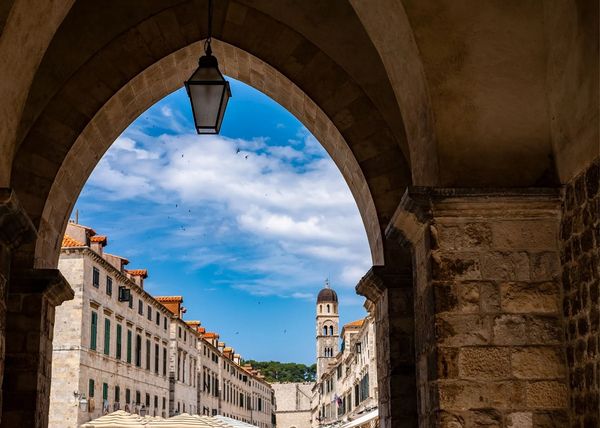.jpg?fit=outside&w=1600&h=1142)
Dubrovnik in the 17th and 18th Century
Dubrovnik was hit by another devastating blow in 1667, an earthquake decimated the town. The entire lower portion of the city except for a few buildings was destroyed, killing nearly 4,000 of its citizens.
The 18th Century ushered in the underground grain silos and pumping in water from nearby mountains to be able to withstand any siege. There were up to 90 Ragusian consulates throughout the world at this point to help with trade, relations, and diplomacy. The Napoleonic Wars happened, and from 1800-1805 it was the only neutral Mediterranean state. Napoleon I gave Dubrovnik to Austria, and in 1918 was absorbed into Yugoslavia.
.jpg?fit=outside&w=1600&h=1142)
Dubrovnik in the 19th Century
It wasn't until 1918 that Dubrovnik was called the Kingdom of Dalmatia, which has stuck as a descriptor for this coastline dotted with thousands of islands that on a map looks like Dalmation spots. Thus Croatia is known as the Dalmation Coast. Others argue that the name was from the Illyrian tribe of Dalmatae that explored this land.
War broke out again in Dubrovnik, in 1991 Croatia declared independence from Yugoslavia and bombs rocked the city. Citizens took refuge in the Monastery where a well provided the necessary water in order to survive. The bombing of the city damaged and destroyed nearly 2/3 of its buildings.
When you are walking through the city walls you can see the brighter red tiles on the rooftops that had to be replaced. The darker tiles on the rooftops are the originals.

Building of Dubrovnik
The Ragusa city started at the tallest part of the rock and was called the Castellum. During the earliest times, there was still a small watery channel that separated Dubrovnik from the mainland so it was a natural way to protect the city from the Slavs.
The Northern Wall of the city is the highest to defend against the nearby Slavs. The western wall included the western part of the rock overlooking the bay. From the Castellum the additional portions of the city included Saint Peter and Pustijerna with the St Blaise church greeting those who crossed the bridge to Dubrovnik, and a lookout tower added in 972 on the mainland looking towards Srdj Mountain that rose 1,400 feet into the air at the time.
The 13th century saw the channel filled and made into a natural thoroughfare for entrance into the city. Today this channel is known as the main street or Placa and is still the center of town today. The additional sections (sexteria) of the city included Saint Blaise, Saint Mary, and Saint Nicholas. In the last part of the thirteenth century the thirty years of building the walls of Dubrovnik, only parts of the wall survive today from that time period, but the walls you see today resemble them as they would have been built (except for the Eastern part).
The Puncijela tower was built on the western wall in 1305 (where Pile Gate is, the main entrance to the city), the next tower to be built was fortress Minceta on the Northwest corner. On the Northern side of town, you will find Saint Luke's tower near the harbor. On the Southern side of town, you find Saint John's Tower. The walls are five feet thick and at the end of the 14th century, there were thirteen towers.
When the Venetians left Dubrovnik in the 14th century all but four gates were walled up, and there are three that were left open and are still used today. The main gate is Pile Gate, the Eastern gate is Ploče Gate, and the harbor gate and Ponta gate.
In the 15th century, the walls expanded to be 16-20 feet deep and 65-80 feet high. The walls run about 6,365 feet in length (1,940 m). Between the high walls and diplomacy and tributes, these are what guaranteed Dubrovnik its freedom and independence. Much of the construction that has lasted to today is attributed to Italian architect Onofrio de la Cava, Florentine architect Michelozzo Michelozzi, and Juraj Dalmatinac.
Because of repeated fires, the wooden homes were destroyed, some by force, others by homeowners volunteering to do so. The owners were paid to do so and to get the supplies. Homes outside the walls that were considered a threat to breaching the walls were also torn down.
Rector's Palace is where much of the city's governance took place. The Ragusans believed it was a great place to store gunpowder, but after two explosions and near destruction, instead of continuing to rebuild it, they ended up repairing it. Today we see the repairs of the building with Gothic and Renaissance touches to it.
.jpg?fit=outside&w=1600&h=1142)
Churches of Dubrovnik
The earliest saints of Dubrovnik were Sergius and Bacchus, and in the 10th century changed to Saint Blaise (a Greek saint) whose statue can be seen throughout the city, including within the city walls. The Church of Saint Blaise was originally built outside the city walls, and for defensive reasons was relocated to a central location inside the city walls on the east end of the Placa.
The Cathedral of Saint Mary (Romanesque) was built around the 12th century and is said to be a votive by King Richard the Lion-Hearted after he was caught in a storm returning from Palestine/Israel and landed on Lokrum Island. The government convinced him to build his votive church in the city because a Monastery already existed on Lokrum Island. The earthquake of 1667 destroyed the original church, and a Baroque church was built to replace it.
The Franciscan Monastery and church also had to be moved from outside the city walls and relocated within the city walls. During the Yugoslavian war, the well within the Monastery was used to help citizens survive during the attempted siege. This is a network of buildings that is much bigger than you would anticipate. There is a large church along the Placa, a Romanesque lower cloister, a Gothic upper cloister, and the oldest pharmacy still operating today.
The Renaissance Church of Saint Savior is located near the Franciscan Monastery on the Placa that was built as a votive after the earthquake in 1520. It was built next to the bell tower that was built in the 15th century is 100 feet high and is the main meeting point in Dubrovnik today.
Dubrovnik As A UNESCO Site
It was in 1979 that Dubrovnik was added to the UNESCO World Heritage site list for its medieval architecture and fortified old town. The town was named a UNESCO site due to the retained medieval walls that are so perfectly preserved.
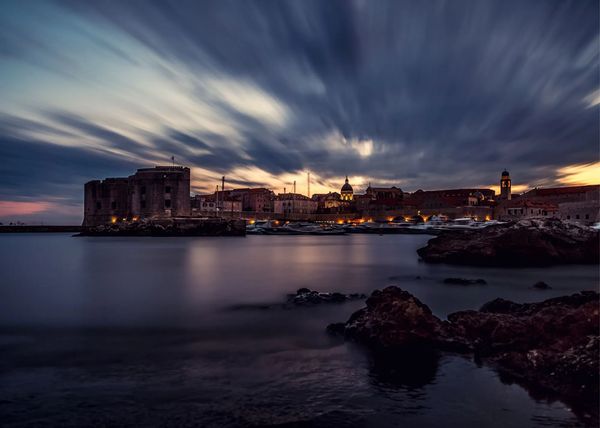.jpg?fit=outside&w=1600&h=1142)
Why Visit Dubrovnik
Dubrovnik was the confluence of cultures in medieval times and still retrains the medieval charms of old. The beautiful white stone, history of adept diplomacy, and the rich maritime trade along with perfectly medieval stone walls definitely make Dubrovnik worth visiting. While the city did become more popular and well known after the popular TV series on HBO, Game of Thrones, tourists have been flocking to Dubrovnik from around the world for centuries. It isn't just history but the island day trips, kayaking, snorkeling, scuba diving, hiking, and many other beautiful landscapes surrounding Dubrovnik that definitely make it worth visiting.
Guided Tours of Dubrovnik
Like it? Pin it for later! Sharing is caring ;)
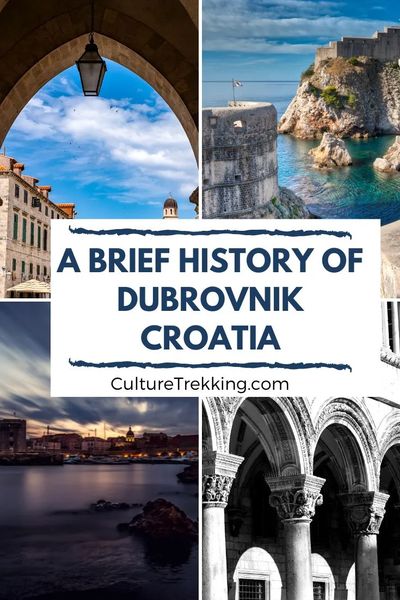.jpg?fit=outside&w=1600&h=2399)
.jpg?fit=outside&w=1600&h=2399)
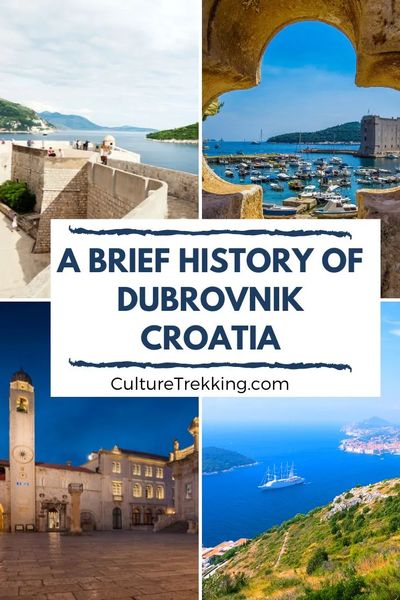.jpg?fit=outside&w=1600&h=2399)
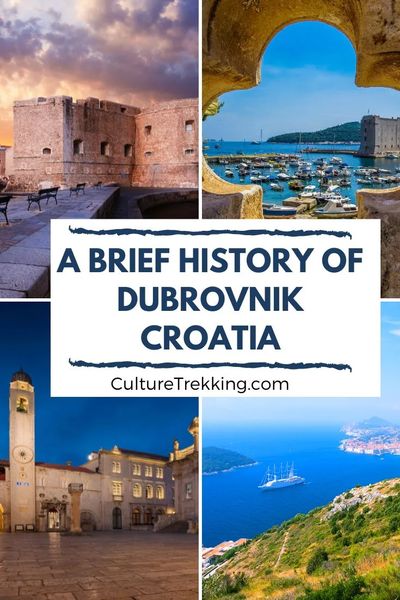.jpg?fit=outside&w=1600&h=2399)
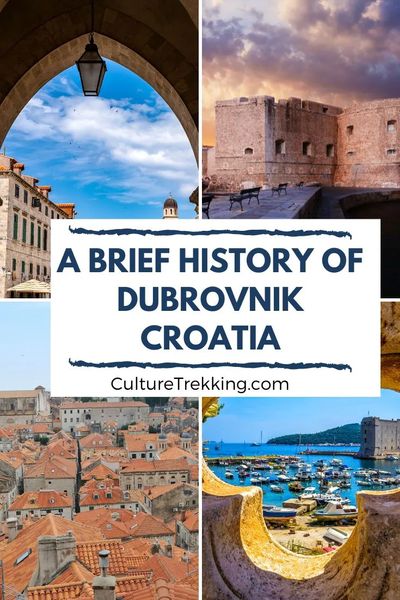.jpg?fit=outside&w=1600&h=2399)
Where to stay in Dubrovnik
Latest Articles On Culture Trekking


Welcome to Culture Trekking!
My name is Janiel, a leader in the travel industry with over 20+ years of experience with international travel. I specialize in solo female travel, cultural connections, sustainable adventures, food and history to help make your travel experiences fun, meaningful, and delicious. My experience in travel, and my personal story have allowed me to get published in Fodors Travel, Atlas Obscura, Metro.co.uk, Trip Advisor, and multiple Podcast interviews. You can find me on pretty much every social media channel Youtube, Instagram, Twitter, Facebook, Pinterest, TikTok. To read more about me and my story click here. If you are a brand and would like to work with me, click here.















